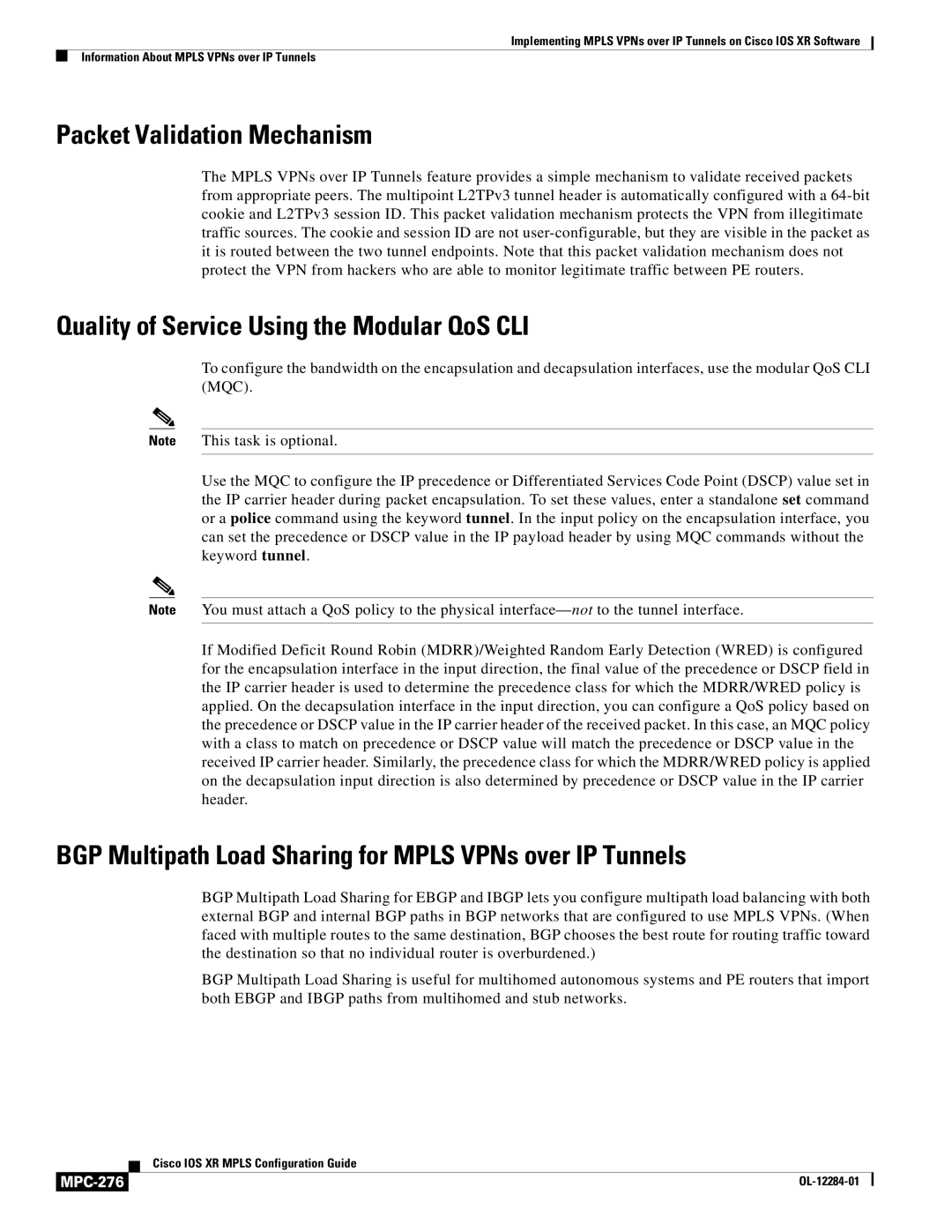
Implementing MPLS VPNs over IP Tunnels on Cisco IOS XR Software
Information About MPLS VPNs over IP Tunnels
Packet Validation Mechanism
The MPLS VPNs over IP Tunnels feature provides a simple mechanism to validate received packets from appropriate peers. The multipoint L2TPv3 tunnel header is automatically configured with a
Quality of Service Using the Modular QoS CLI
To configure the bandwidth on the encapsulation and decapsulation interfaces, use the modular QoS CLI (MQC).
Note This task is optional.
Use the MQC to configure the IP precedence or Differentiated Services Code Point (DSCP) value set in the IP carrier header during packet encapsulation. To set these values, enter a standalone set command or a police command using the keyword tunnel. In the input policy on the encapsulation interface, you can set the precedence or DSCP value in the IP payload header by using MQC commands without the keyword tunnel.
Note You must attach a QoS policy to the physical
If Modified Deficit Round Robin (MDRR)/Weighted Random Early Detection (WRED) is configured for the encapsulation interface in the input direction, the final value of the precedence or DSCP field in the IP carrier header is used to determine the precedence class for which the MDRR/WRED policy is applied. On the decapsulation interface in the input direction, you can configure a QoS policy based on the precedence or DSCP value in the IP carrier header of the received packet. In this case, an MQC policy with a class to match on precedence or DSCP value will match the precedence or DSCP value in the received IP carrier header. Similarly, the precedence class for which the MDRR/WRED policy is applied on the decapsulation input direction is also determined by precedence or DSCP value in the IP carrier header.
BGP Multipath Load Sharing for MPLS VPNs over IP Tunnels
BGP Multipath Load Sharing for EBGP and IBGP lets you configure multipath load balancing with both external BGP and internal BGP paths in BGP networks that are configured to use MPLS VPNs. (When faced with multiple routes to the same destination, BGP chooses the best route for routing traffic toward the destination so that no individual router is overburdened.)
BGP Multipath Load Sharing is useful for multihomed autonomous systems and PE routers that import both EBGP and IBGP paths from multihomed and stub networks.
| Cisco IOS XR MPLS Configuration Guide |
|
